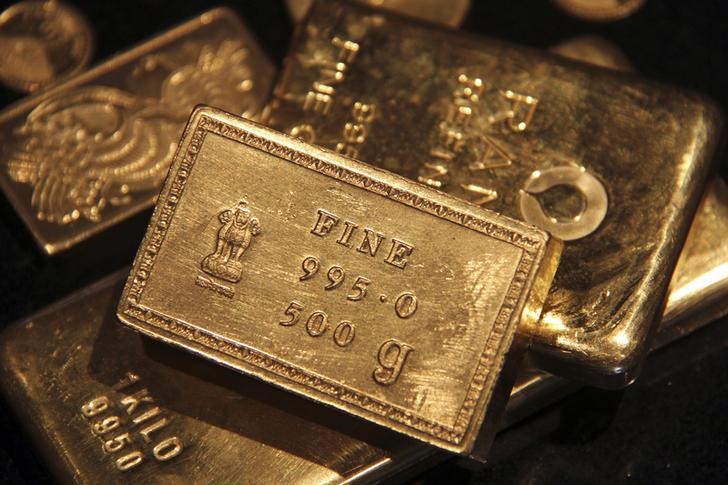By Barani Krishnan
Investing.com - Gold longs win again, even when U.S. inflation isn’t exactly scaring the Biden administration.
Gold futures’ most active contract on New York’s Comex, February, settled up $8.80, or 0.5%, at $1,827.30 an ounce on Wednesday. It was the fourth day in a row that Comex gold has risen, with a net gain of 2.1% in that stretch.
The latest run-up came after the U.S. Consumer Price Index reading for December came squarely within expectations, rising 7% on the year to keep with the highest pace of inflation in 40 years seen since October. Only the monthly rate was a tad higher than forecast, expanding by 0.5% versus expectations for 0.4%.
“Today’s report — which shows a meaningful reduction in headline inflation over last month, with gas prices and food prices falling — demonstrates that we are making progress in slowing the rate of price increases,” the White House said, commenting on the CPI reading, It did add that the current rate of inflation “underscores that we still have more work to do, with price increases still too high and squeezing family budgets”.
With the December CPI not providing any sticker shock to markets, the benchmark 10-year U.S. Treasury note and the dollar both retreated, allowing gold to climb.
“Gold has been comfortably above the $1800 level after the 10-year Treasury yield rally stalled at the 1.80% level,” said Ed Moya, analyst at online trading platform OANDA. “If dollar weakness accelerates here, gold could make a run towards the $1,840 level.”
“Gold seems like it is in a good place as Treasury yields won’t be rallying much higher until financial markets have balance sheet runoff certainty and that won’t happen until at least a couple more Fed meetings.”
The Federal Reserve is closely watching the CPI Index to determine the timing for the first pandemic-era interest rate hike.
The Fed dropped interest rates to virtually zero after the outbreak of the coronavirus pandemic in March 2020, keeping them at between zero and 0.25% over the past 20 months. The central bank has signaled that it will raise rates as many as three times this year, with the first hike likely coming between March and June.
The U.S. economy itself shrank by 3.5% in 2020 due to shutdowns and other disruptions caused by the Covid-19 crisis. The Fed has projected a 5.5% growth for 2021 and 4% for 2022. The central bank’s problem though is inflation, running at four-decade highs as prices of almost everything have soared from the lows of the pandemic due to higher wage demands and supply chain disruptions.
Gold is touted as an inflation hedge and it is reinforcing that label by holding to the $1,800 level since the start of 2022. The yellow metal failed in its hedge mission several times last year as the dollar and U.S. Treasury yields rallied instead on expectations of U.S. rate hikes.
News of rate hikes are almost always bad for gold, which somewhat reflected this last year as it closed 2021 down 3.6% for its first annual dip in three years and the sharpest slump since 2015.
But analysts think that if the U.S. inflation theme remains strong through 2022, then gold could even retrace 2020’s record highs above $2,100 — a peak which, incidentally, came on the back of worries about price pressures as the United States began spending trillions of dollars on pandemic relief.
